Everything You Need to Know About Squash
You’re probably already aware that squash is not only healthy for you but versatile since it can be used to make a number of dishes. That’s because you can prepare them by grilling, sauteing, steaming, and using them for baking. Some people prefer to eat them raw.
What you may not know, is that squash has several health benefits that may be just what you’re looking for. This article will share with you the different types of squashes, how to grow them, and a lot of other useful information. So here’s everything you need to know about squash. This is where I get my garden seeds: SeedsNow
Basic Info: Everything You Need to Know About Squash
Squash comes from the cucurbits family (gourd family). There happen to be over 100 different types of squash. That’s far more than what you would find at your farmer’s market or local grocery store.
This may surprise you, but even though squash is considered a vegetable, it’s technically a fruit. That’s because it produces seeds and comes from the flowering part of the plant, just like fruit.
Nutritional Value
Squash has lots of vitamins and minerals that provide you with several health benefits. No matter which squash you choose to consume, they are full of vitamins A, B6, and C. You’ll also find magnesium, fiber, potassium, phosphorus, and riboflavin. Yellow squash has a great deal of manganese in it.
Health Benefits of Squash
Boosts Immune System
Because of all the minerals and vitamins that are present in squash, they provide a boost to our immune system and help fight against foreign invaders.
Helps Manage Diabetes
Certain types of squash are very high in fiber and pectin, which actually helps stabilize sugar levels. This makes it easier for people that suffer from diabetes to manage the symptoms better.
Prevents Infections
By chewing and eating the seeds of squash, they’ve been known to help fight off foreign substances in our bodies that can cause some serious health issues.
Strengthens Lung Health
Squash is jam-packed full of vitamin A, a vitamin that is associated with reducing emphysema. Eating squash can also be a protective element for lung cancer.
Regulates Blood Circulation
If you eat enough squash, you can actually increase your energy level and increase the circulation in your bloodstream. That’s because there is a ton of iron and copper present, that works great with your red blood cells.
Protects Your Heart’s Health
The potassium and magnesium that you can find in squash work as a defense against a number of heart health issues. It helps increase the blood flow and increases the oxygen level in organs, such as the lungs and heart. Because of this, it decreases the chances of a heart attack or stroke.
Provides Relief From Asthma
People that suffer from asthma have found relief by eating squash. That’s because it has antioxidant and anti-inflammatory properties that can actually help with the irritation.
Strengthens Bones
With all the vitamins and minerals that are present in squash, they’ve been known to help with bone development and bone mineral density. Eating squash can also help with preventing conditions such as osteoporosis.
Two Categories for Squash
No matter which type of squash you have, it is from one of two categories. First, you have Summer squash, that grows quickly and harvests sooner, producing a softer skin and flesh. Winter squash takes much longer to grow and is harvested in summer and fall. They also have a tougher skin.
Common Types of Squash
Acorn

The acorn squash is shaped, well, like a green acorn. It has a yellow-orangish flesh and has a mild flavor to it. You can scoop the seeds out and use the syrup as a glaze for the perfect baked acorn squash.
Banana

The banana squash has an elongated shape and a light yellow color to its exterior, making the name appropriate. The inside has an orange color and a sweet taste that comes with it. People who often eat banana squash will mash it or puree it in a soup.
Butternut
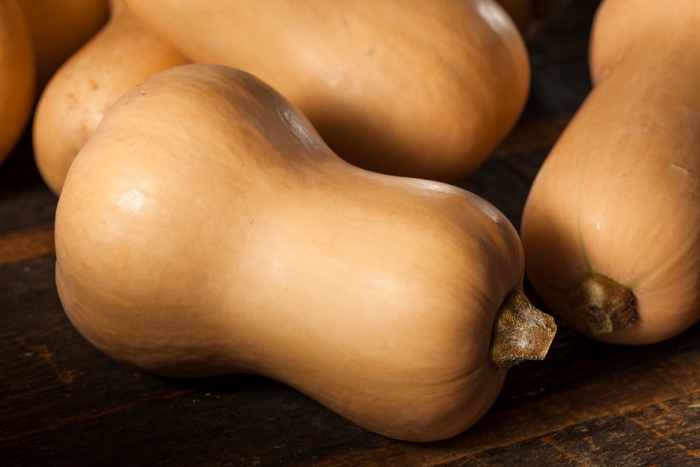
This type of squash is shaped like a bulb, with a light tan color on the exterior. It has a sweet nutty flavor and unique texture that makes it a perfect squash for soup, gnocchi, and risotto. You could also enjoy it by baking or sauteing it.
Sugar Pumpkin

This type of squash is popular in the fall, especially around Halloween and Thanksgiving time. Most people use it to make pumpkin pie, but you can also use it to make bread, cupcakes, and soups.
They are the pricier pumpkins typically at the grocery store and are smaller in size. Look for the little 6-8-inch in diameter pumpkins when they come in the fall. These are not the pumpkins we carve for Halloween.
Spaghetti (picture of a yellow one)
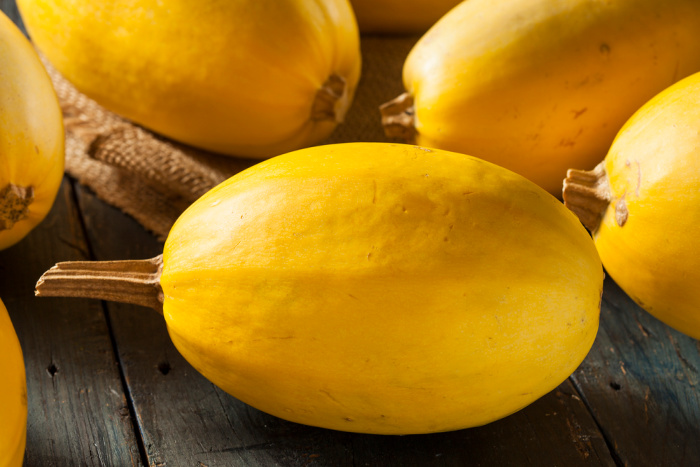
Just like its name suggests, spaghetti squash contains stringy shredded flesh inside. Spaghetti squash has become a trendy food option for those looking for a pasta alternative that has far fewer carbs. It’s also a great squash to consider for stuffing.
Yellow
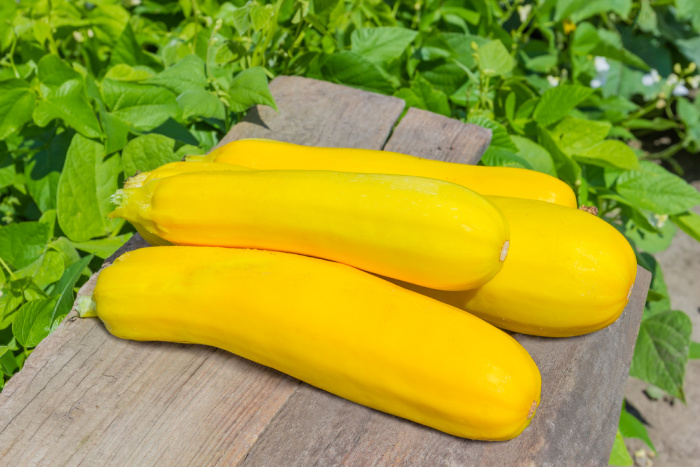
Yellow squash has a bright yellow exterior and is often found next to Zucchini at the grocery store. Their skins are very thin, making them easy to chop and saute. There are two types of yellow squash. The best way to tell them apart is by looking at the neck to see whether it’s straight or crooked.
Zucchini
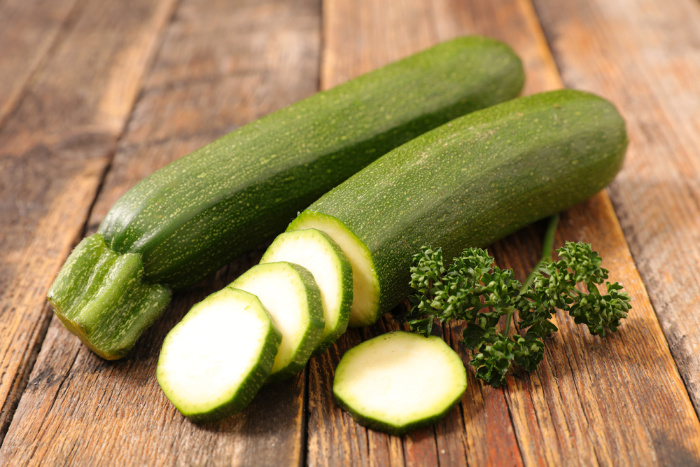
The zucchini squash has a dark green color and a straighter shape to it. You can prepare zucchini in a number of ways, including steaming, baking, sauteing, and grilling. Zucchini also is great with baking, especially if you love zucchini bread or cookies.
Everything You Need to Know About Growing Squash
Squash does well when temperatures are more of a consistent 65 degrees or higher, so waiting till late spring is fine. They need plenty of sunlight and soil that has good drainage. It helps if you add compost on top of the soil.
They also require regular watering, but just enough to moisten the soil. Squash plants are typically big, so be sure that you plant them at least 3 to 6 feet apart, but follow the recommended spacing that comes on the packaging.
Depending on what type of squash you’re growing, summer squash takes around 50 to 65 days to mature, while winter squash may take around 60 to 100 days before being harvested.
Summer squash will need to be harvested 2-3 times a week when you notice the rind is tender, and just before the seeds develop. Winter squash, on the other hand, will need to be fully ripened with hardened skin and is harvested just before the first frost.
How to Store Squash
Summer squash will only be stored in the refrigerator for around 4-5 days. Winter squash happens to store away for far longer than summer squash.
You’ll want to store your winter squash in a dark cool place where the sun won’t ripen them so quickly. Winter squash doesn’t need to be refrigerated and can last for 2 to 3 months.
You can freeze squash to use it within the next 6 months without any worry of compromising the flavor or texture. If you’re wanting to freeze winter squash, you’ll need to remove the skin and cook it before doing so.
Garden Gloves
These are my favorite garden gloves: DIGZ Garden Gloves They come in different sizes, that’s what I love the most. These are the best rose bush gloves: DIGZ Rose Bush Garden Gloves I have to get the large size for my hands. These are awesome!
Everything You Need to Know Series:
- Cucumbers: Everything You Need to Know
- Kale: Everything You Need to Know
- Broccoli: Everything You Need to Know
- Mushrooms: Everything You Need to Know
- Lettuce: Everything You Need to Know
- Carrots: Everything You Need to Know
- Tomatoes: Everything You Need to Know
- Potatoes: Everything You Need to Know
Final Word
This is a lot of information about squash that is important for you to know. What are some other ways you prepare squash or have discovered other health benefits that have to do with squash?
Everything you need to know about squash is listed here. However, is there anything you would add? Please start a garden if you haven’t ever had one before. May God bless this world, Linda
Copyright Images: Squash Depositphotos_227024450_s-2019, Acorn Squash Depositphotos_19371871_s-2019, Butternut Squash Depositphotos_55174259_s-2019, Pumpkins Depositphotos_11785006_s-2019, Yellow Squash Depositphotos_204124358_s-2019, Zucchini Squash Depositphotos_133167002_s-2019

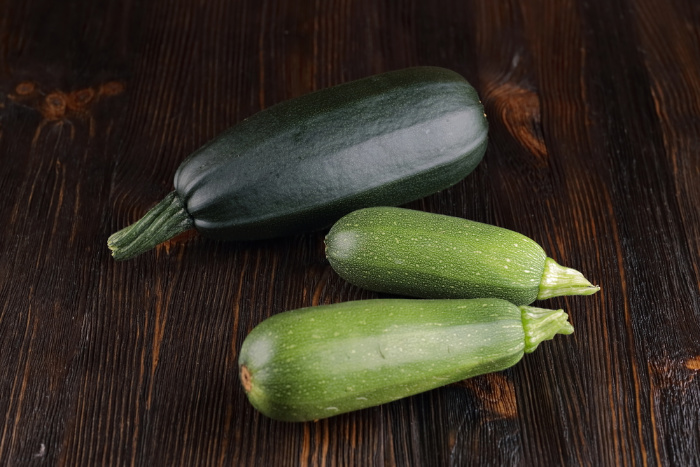


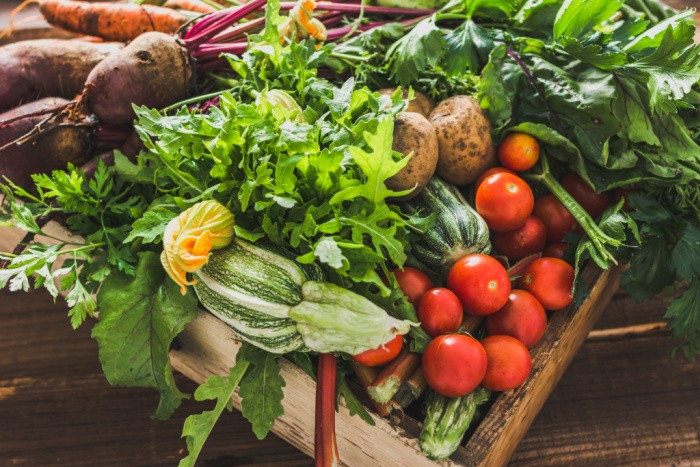
















Spaghetti squash is my best friend since DH was diagnosed with T2D! (Please don’t tell him–he really thinks he’s still getting pasta!) Since a big one is too much for just two of us, I roast the halved squash, scoop out the “spaghetti,” and freeze what we don’t eat in one sitting. Just as good heated up in the double boiler (I’ll even cheat and put the pasta sauce in the bottom half–two for the price of one.)
Squash does take up a lot of ground space, so if your garden is small, train squash vines up a trellis. If a squash looks like it’s going to be big, and you’re worried about whether it will hang safely, use some old panty hose or similar to “sling” it on the trellis.
Did you know you can eat the blossoms? The male blossoms are on a long, thin stalk, and don’t have the “baby” squash at the base–as long as you leave a few for pollination, you can safely pick the rest. They can be dehydrated for later use, or dipped in batter and fried, or used in soups/stews.
There’s an interesting book (“Buffalo Bird Woman’s Garden” is, I think, the usual title) that describes the native methods of drying the blossoms as well as squashes for storage, and how they cooked with them.
Hi Rhonda, I did not know you can eat the blossoms!! Wow! I love hearing your DH loves spaghetti squash!! I love freezing half of what I cook! Great comment, Linda
Sometimes growing conditions can cause zucchini to develop a bitter taste.
It’s a good idea to always test zucchini by cutting off the stem end and licking the flesh. If it has a bitter taste, don’t cook it.
Hi Carol, I did not know this about zucchini! Love it! Linda
I have a recipe for a zucchini cake, it is so moist. You don’t even know it has zucchini in it.
I also have a zucchini casserole recipe that is so good. I like to cook with zucchini because it
basically has no taste so you can do what you want with it. Moist people run when people bring them zucchini but I love it. Did you know you can make Bread and Butter pickles out of zucchini? They
taste just like pickles made out of cucumbers.
Hi June, oh my gosh, I vaguely remember making zucchini bread and butter pickles!! I love zucchini cake and casseroles with zucchini! Life is good when we can produce veggies in our gardens! Linda
Hi June, I’m thinking I would like to try your zucchini cake, can you share your recipe? Thank you! Linda
Zucchini Cake
3 cups grated Zucchini
3 cups sugar
4 eggs
3 cups of flour
2 teaspoons baking powder
1 1/2 teaspoons cinnamon
1 1/2 cup vegetable oil
1 cup chopped pecans
2 cups of coconut
1/4 teaspoon salt
1 teaspoon baking soda
Beat sugar and eggs together: add oil mix. Add all dry ingredients into sugar and egg mixture.
Beat well. Add Zucchini, coconut and nuts. Stir well. Bake at 300 degrees for 1 hour.
Ice while hot with a cream cheese icing.
This makes a 9 X 13 pan
Hi June, oh my, thank you! I have got to make this for the blog! I will give you credit, my friend! It’s all about teaching people to cook from scratch! Thank you!!! Linda
I’m sorry this is a little off subject. I quoted say that the story of the radish sandwich was in the book :
When the banks closed we opened our hearts. That might not be the one. I have so many stories of the depression that I might have mentioned the wrong book. Another good book from them is We had
everything but money. Here is the info in the book if you want to try to order it: Country Books
P.O Box 990< Greendale Wi.53129. It says Credit card orders can call 18005581013. Hope this will
help you.
Hi June, thank you so much!! I will call them! Linda